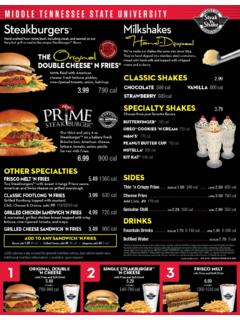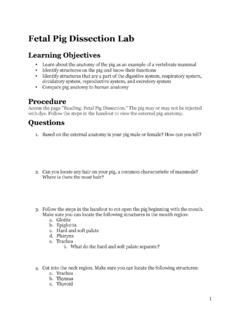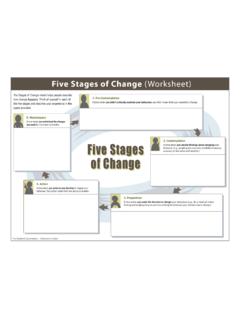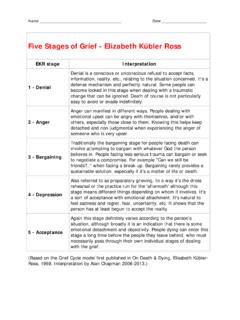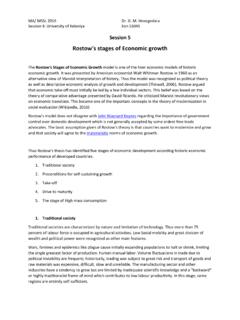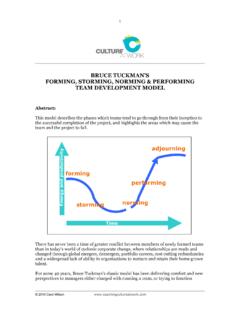Transcription of Five Stages of IoT - Amazon S3
1 five Stages of IoTPage 1 2016 Bsquare Internet of Things (IoT) is revolutionizing the way industrial companies work by enabling the connectivity of equipment and devices, collection of device data, and the ability to act on that data for improved business outcomes. In fact, IoT is expected to consist of 80 billion connected devices generating 180 zettabytes of data by 2025, according to IDC. Across the energy, oil and gas, and manufacturing industries, Gartner predicts that 56% will be using or plan to implement some form of IoT by the end of 2016. In spite of the fast-growing rates of adoption and device connectivity, an Oxford Economics report found that only 8% of businesses are using more than 25% of the IoT data they collect missing the opportunity to extract intelligence from the untapped organizations believe in the opportunities IoT presents, but lack execution strategies; however, industrial businesses that have jumped into IoT with both feet are seeing significant tangible benefits.
2 According to Genpact, nearly 80% are seeing major improvements in operational efficiency, and dramatic cost savings, such as annual process redesign savings of $530 million compared with $88 million at companies who are slower awareness of IoT has recently become more prevalent, many of the underlying technologies have been around for quite some time. Bsquare has been partnering with enterprise-class companies for more than 20 years to help them add intelligence to remote devices, connect them, and drive positive business outcomes with the resulting data. This extensive track record has given Bsquare unparalleled insight into what constitutes a successful IoT implementation and what pitfalls organizations may Stages of IoTFive Stages of IoTPage 2 2016 Bsquare and How Should You Adopt IoT?First and foremost, don t adopt IoT for IoT s sake. Instead, focus on specific business use cases and outcomes, using IoT as the basis for an overall strategy to achieve those goals.
3 For instance, in industrial organizations, these may be to improve operational efficiencies and reduce costs through increased asset or service uptime; lower warranty costs; or device, device resource, and asset are many roads you can take in pursuit of these goals, but to reap the greatest return it s important to look at IoT not just as a journey but a maturity progression as your organization s needs and adoption of IoT changes. Bsquare s experience has shown that moving along the maturity path to full IoT can be broken down into five Stages : device connectivity, real-time monitoring, data analytics, automation, and enhancing on-board intelligence. Each stage beyond the first provides increasing levels of benefits. Progression through all five Stages culminates in a holistic, intelligent, automated IoT system that delivers the broadest range of positive outcomes for multiple business goals.
4 Whether your organization needs to complete all five Stages depends on the desired business outcomes. Having a clear strategy, plan for execution, and an understanding of what constitutes success will help determine how far your company needs to companies fail to realize that maximum ROI will only be achieved after completing most, if not all, of the Stages , and are discouraged when they don t reach the business goals they envisioned, Bsquare has found. They also have observed that many heavy industrial equipment organizations have the opportunity to extract the greatest value from their equipment after progressing through the entire IoT maturity model. The amount of time required to step through the maturity model and time spent at each stage will vary depending on many factors: the amount of equipment and devices already outfitted with sensors or other intelligence, communications and data storage infrastructure, the types of monitoring and analysis systems already in place, the ease of integration with existing enterprise systems, and organizational readiness, to name a , what does each stage mean and how can you get started?
5 Let s examine each stage , how it builds on its predecessor, and the resulting benefits and potential pitfalls along the s important to look at IoT not just as a journey but a maturity progression as your organization s needs and adoption of IoT Stages of IoTPage 3 2016 Bsquare 1: Device Connectivity and Simple Data ForwardingEvery IoT story starts with a smart, connected device. Often companies begin their IoT progression by outfitting their equipment and devices with sensors that collect all manner of information and data. Often referred to as telematics, machine-to-machine (M2M) or IoT products and solutions, a gateway or similar communications device transmits sensor data from the device to a location where the information can be stored for future use. Figure 1 IoT maturity stagesFive Stages of IoTPage 4 2016 Bsquare of these systems operate with very limited communications bandwidth, particularly in industries with remote or highly mobile environments.
6 This means only a small subset of the data produced is actually collected. Even in situations where bandwidth is not an issue, the cost of transmitting and storing such vast amounts of data, which may or may not be important, can be of this is a crucial first step in enabling devices to form the foundation of an IoT solution. Without the device data, none of the subsequent Stages are possible. However, simply adding sensors and intelligence to equipment and collecting data requires investment but doesn t produce business benefits. A system that performs some type of monitoring or analysis is required to begin to extract value from the device 2: Real-time MonitoringAs data is collected, it must be monitored in real-time and visualized to begin enabling the use cases that lead to desired business outcomes. Common use cases for industrial equipment are: condition-based maintenance to improve operational efficiency and reduce service costs, device utilization information to help guide future product design and improve regulatory compliance, and IoT device management for enhanced device integrity and lower operating costs.
7 Monitoring and alerting can help companies gain awareness of equipment status and start to adopt and refine business processes that improve 2 Real-time monitoringBasic monitoring, data vizualization, and alertingFive Stages of IoTPage 5 2016 Bsquare many cases, the monitoring system is a dashboard that provides basic information, data visualization, and simple alerting. For instance, the dashboard displays an alert when a temperature gauge exceeds a specified threshold so the person monitoring the dashboard can take steps to diagnose and service the this stage , data is often called actionable data, but the action must be taken by humans, who simply can t stay on top of the vast amount of monitoring and alerts that take place on the flood of data generated as real-time monitoring is rolled out to more and more equipment. One of the biggest hurdles along the way is that the dashboard-human operators approach cannot scale effectively.
8 Software needs to perform monitoring and analysis not real-time monitoring, companies can see some level of condition-based maintenance; however, using this approach often results in an unacceptably high rate of false positives or false negatives. These are error codes or conditions that indicate a problem but when the equipment is serviced no problem is found (false positives), or error conditions that are not correctly flagged (false negatives). Basic dashboard solutions simply cannot detect complex conditions and events as they attempt to apply simple logic to complex equipment. To extract real value from machine data, complex event processing capabilities in the form of data analytics are required. These go beyond simple event processing (if a then b) to apply rules and analyze multiple data sources to gain valuable insight and truly actionable 3 Complex eventsFive Stages of IoTPage 6 2016 Bsquare 3: Data AnalyticsData analytics can deliver insight, predictions and optimization, and reduce unnecessary false positives by an average of 25%, but culling insights from rivers of data is an involved process.
9 In order to support IoT, many different types and formats of data are likely to be needed. To effectively use all these different data sources, an extra ingest step is required to align the data; for instance, transforming all temperature data from Fahrenheit to Celsius or enriching data to give context. There are several elements required for a successful data analytics system:Data discovery First and foremost, it s important to have the right kinds of data to support the desired business use cases and outcomes. The appropriate types of data can be identified and collected by determining whether additional sensor data is necessary to provide essential device information, and what business systems may require integration. Only then should complex event processing capabilities for in-depth analysis and actionable insight be learning Algorithms can then be applied to the large pool of data to accomplish much of the heavy lifting required to identify correlations and patterns that may have been done manually in the analysis Once machine learning is applied to the data, groups of equipment that behave similarly can be identified to help understand how the environment is 4 Elements of data analyticsMachine learningCluster analysisDigitalmodelData discoveryInsightFive Stages of IoTPage 7 2016 Bsquare model This is a representation of how the equipment behaves.
10 Beyond the basic anatomy of a particular piece of equipment with a given number of sensors, the behavior of how those sensors interact with each other leads to together, these elements provide truly valuable insight that allows appropriate actions to be taken in many cases automatically. In the example of condition-based maintenance, the ability of complex event processing logic to examine historical data and other contextual or system information (such as equipment specifications) in concert with machine sensor data provides much more accurate profiles and event prediction than human operators ever insights gleaned at this stage further a company s ability to make progress towards several use cases: predictive failure for increased asset uptime and elimination of false negative and positive reports, condition-based maintenance, device optimization for improved asset performance, and device insights alone may provide more sophisticated dashboards and a better picture of what s occurring in the organization s environment, the system is still reactive not proactive.




